Key takeaways:
- Songwriting awards recognize originality, lyricism, and emotional impact, often leading to new opportunities for artists.
- Poetic lyrics create emotional experiences and imagery, allowing listeners to connect deeply with the music.
- Effective lyric writing involves techniques such as repetition, contrast, and storytelling to engage and resonate with the audience.
- Analyzing award-winning songs reveals the importance of vulnerability, narrative, and vivid imagery in crafting memorable lyrics.

Understanding songwriting awards
Songwriting awards celebrate the immense creativity and skill that goes into crafting songs. I remember the first time I entered a local songwriting competition; the feeling of vulnerability and exhilaration was undeniable. It made me wonder, what truly distinguishes a song worthy of recognition?
Each award has its own criteria, typically assessing originality, lyricism, melody, and emotional impact. When I think about the songs that have resonated with me, they all share a raw authenticity. Is it the catchy hooks, or perhaps the poignant storytelling, that truly capture the heart of the listener?
Winning an award can open doors and create opportunities for songwriters. I’ve seen friends gain attention and collaboration offers after being recognized for their work. How many talented musicians have you heard of whose careers took off after winning just one accolade? It’s astonishing to think about the possibilities that can spring from one moment of recognition.
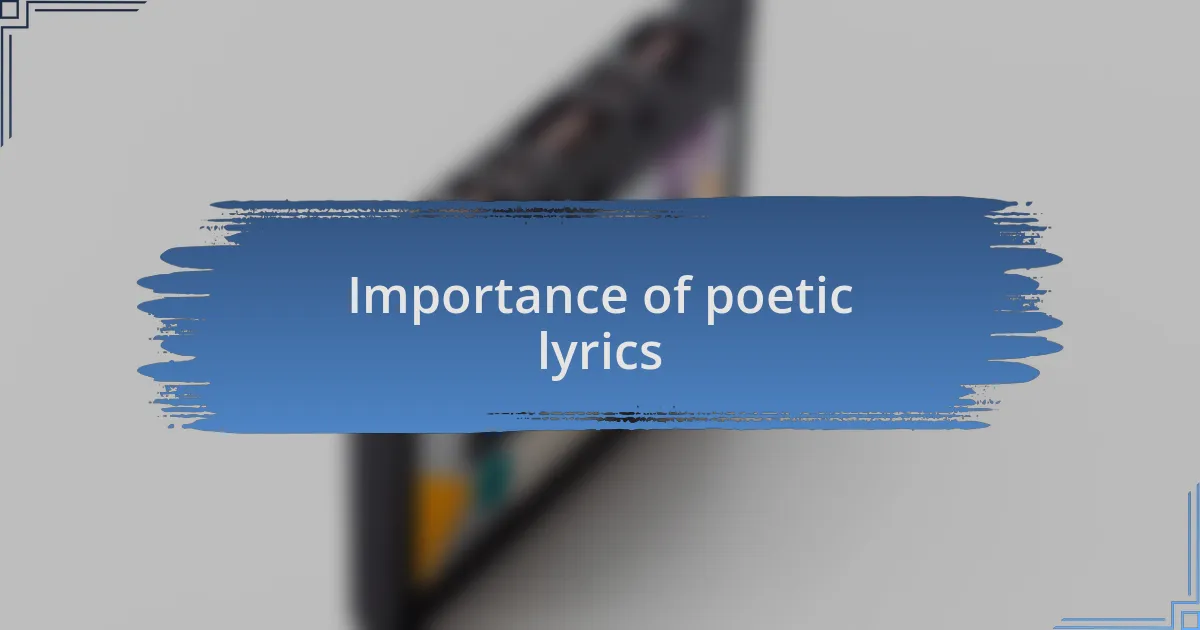
Importance of poetic lyrics
Poetic lyrics hold a special significance in songwriting, as they transform mere words into powerful emotional experiences. I remember crafting a song where each line felt like a puzzle piece coming together, allowing me to express feelings that were often hard to articulate. Isn’t it remarkable how a few well-chosen words can evoke memories or stir feelings of nostalgia?
The beauty of poetic lyrics lies in their ability to create vivid imagery and deeper connections. When I listen to songs with meaningful verses, I often find myself visualizing the stories behind them, feeling as if I’m walking alongside the artist through their journey. How many times have you experienced intense emotions from a single line that resonated with your own life?
Moreover, poetic lyrics can challenge listeners to think critically and reflect on their own experiences. I’ve often found myself pondering the subtle nuances in a lyric long after the song has ended, which fosters a greater appreciation for the art of songwriting. It makes me wonder—what message do I want to convey through my own lyrics, and how can I craft a narrative that resonates with someone else’s heart?
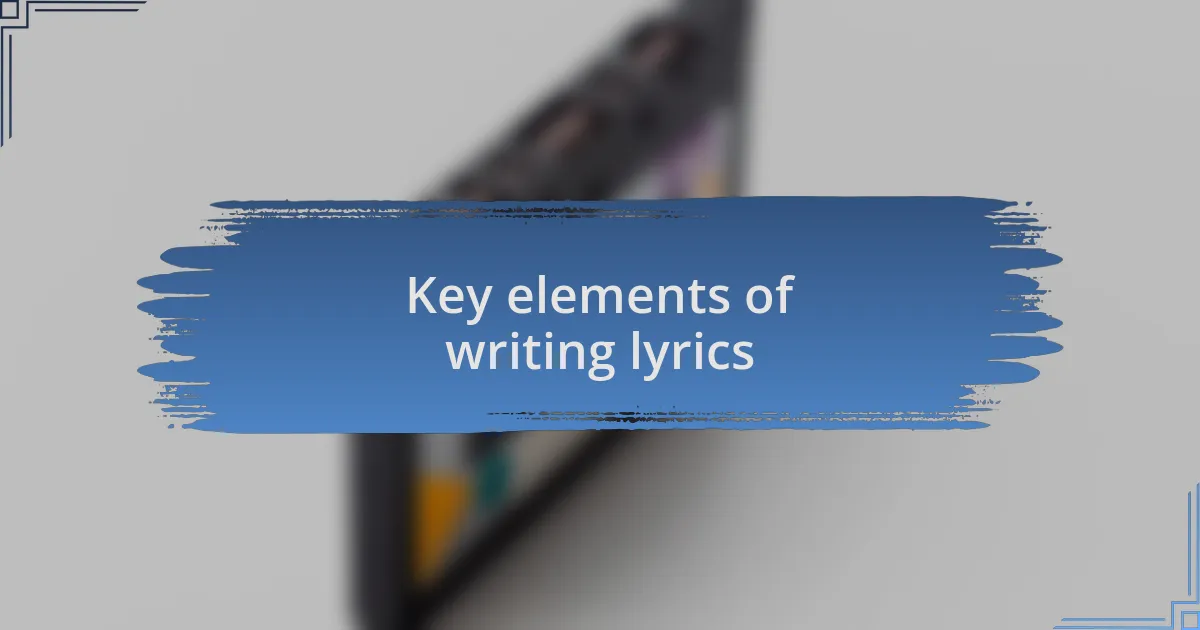
Key elements of writing lyrics
When diving into songwriting, one of the key elements is having a strong sense of theme. I recall a time when I focused on the theme of loss for a ballad I was writing; it shaped every metaphor and line I crafted. It’s fascinating how sticking to a central theme can unify the lyrics and resonate deeply with listeners—how could one not relate to the various forms of loss we all experience?
Another vital aspect is rhythm and flow. I’ve often found that the phrasing of lyrics can drastically change the listener’s experience. I once revised a chorus multiple times to find the perfect rhythm—each subtle shift made it feel more alive. Isn’t it intriguing how the right rhythm can turn a simple idea into a catchy hook that lingers in our minds?
Imagery plays an essential role, too. I love using vivid metaphors or concrete images that paint a clear picture for the audience. For instance, in one of my songs, I compared heartbreak to a fading echo—this not only illustrated the pain but also allowed listeners to connect their experiences to the imagery. Don’t you think that such visual elements can turn lyrics into an immersive journey?
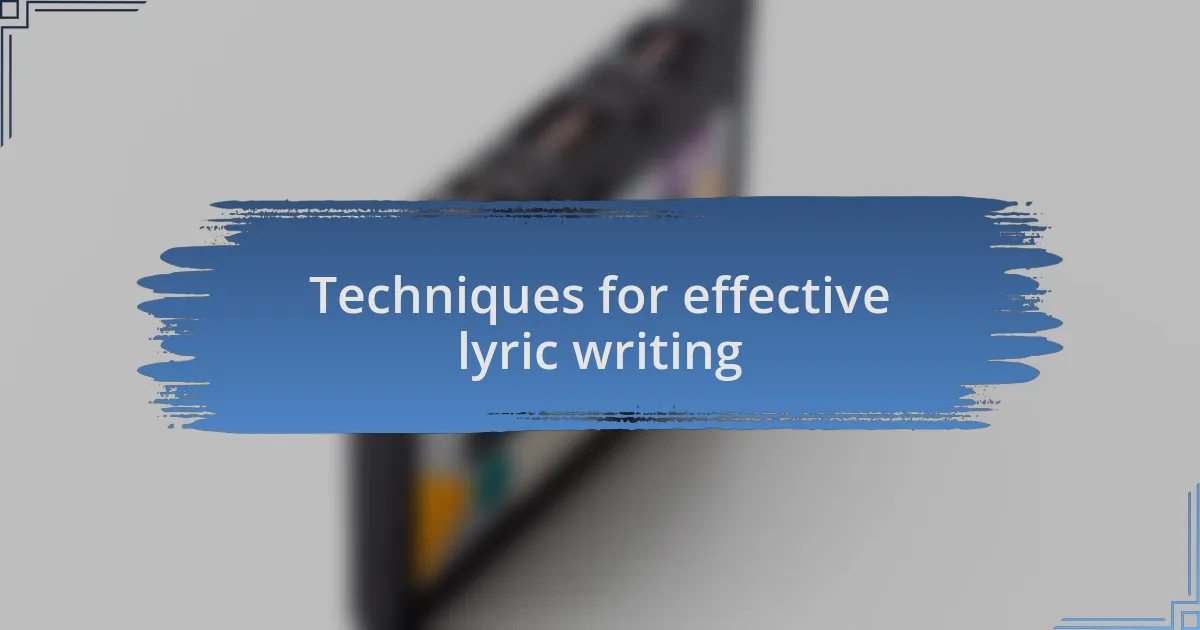
Techniques for effective lyric writing
One technique I’ve found invaluable is the use of repetition to create emphasis and make lyrics memorable. While working on a song about resilience, I used a repeated phrase that encapsulated the message of overcoming obstacles. Each time it resurfaced in the chorus, I noticed how it deepened the emotional impact—not just for me, but for anyone who listened. Don’t you think it’s fascinating how repetition can anchor a concept in someone’s mind?
Another effective method is playing with contrasts. In a particularly emotional piece I wrote, I juxtaposed joyful imagery with sad undertones, which created a powerful tension that resonated with listeners. I remember the moment someone told me how the mix of feelings in that song mirrored their own experiences—it felt rewarding to know that the duality struck a chord. How often do we experience happiness and sadness simultaneously?
Lastly, storytelling in lyrics can transform a song from a mere collection of words into a vivid narrative. I’ve experimented with weaving small, personal stories throughout my verses. A song about moving away included memories of shared laughter, which allowed listeners to feel nostalgic. Isn’t it compelling how a well-told story can draw listeners in and evoke their own memories?
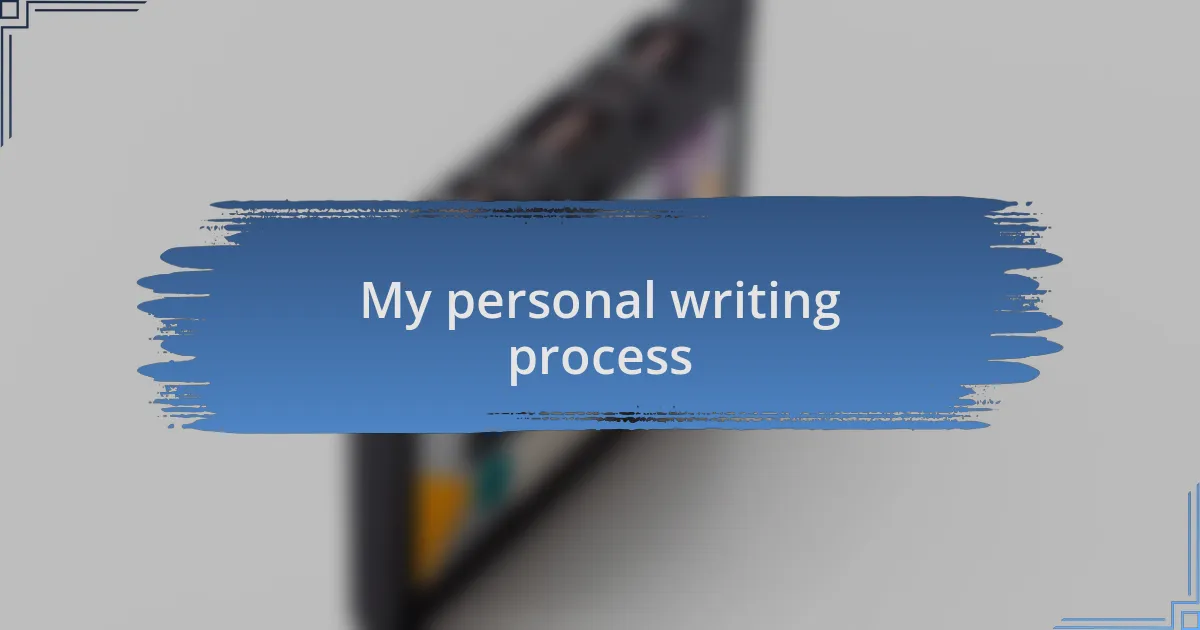
My personal writing process
When I sit down to write lyrics, I often begin with a single thought or feeling that resonates deeply within me. For instance, during a quiet evening walk, an image of an old photograph came to mind, sparking a wave of nostalgia. That memory became the foundation for a song I wrote about lost connections, and it’s incredible how one simple moment can blossom into a narrative that others relate to.
Sometimes, I find inspiration in unexpected places—like an overheard conversation at a coffee shop that sticks with me. One time, I caught a snippet about longing and dreams for the future, which led to a chorus that encapsulated hope and desire. It’s fascinating how everyday experiences can fuel our creativity, don’t you think?
Another aspect of my writing process is revision. I truly believe that the first draft is just the beginning. After I write a song, I let it sit for a day or two and then revisit it with fresh eyes. There was a time when I thought my first drafts were perfect, but I soon realized that refining my lyrics brings clarity and depth. This process allows me to enhance my message and connect with listeners on a more profound level. Have you ever felt how a simple tweak in wording can change the entire emotional landscape of a piece?
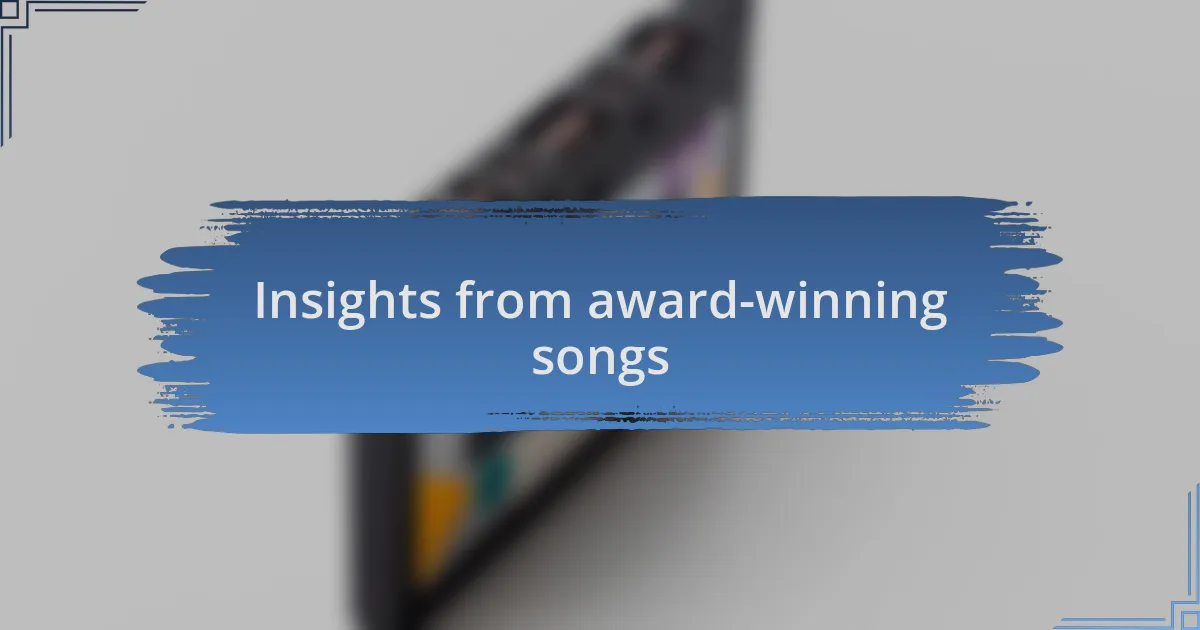
Insights from award-winning songs
When I analyze award-winning songs, I often notice a common thread: vulnerability. Take a look at a song like “Someone Like You” by Adele. The raw emotion captured in her lyrics conveys heartbreak so effectively that it resonates with anyone who’s experienced similar pain. That authenticity is key. Isn’t it amazing how sharing our deepest struggles can create a powerful connection with listeners?
Additionally, the art of storytelling shines brightly in many acclaimed tracks. For instance, in Taylor Swift’s “The Last Great American Dynasty,” she weaves a narrative that draws listeners into a world filled with intrigue and emotion. I remember the first time I heard it; I felt like I was part of that story, living each twist and turn alongside the characters she described. This ability to transport listeners into a different reality makes the lyrics unforgettable. Have you ever found yourself so engrossed in a song that it felt like you were part of the tale unfolding?
Moreover, the use of vivid imagery in award-winning songs often sets them apart. For instance, in “Firework” by Katy Perry, the visual metaphor of a firework captures the essence of self-empowerment and celebration. When I listen to it, I can picture each burst of color lighting up the night sky, making the message not only heard but also felt. Doesn’t it strike you how effective imagery can enhance a song’s emotional impact? By painting pictures with words, we can create lasting impressions that linger long after the music ends.